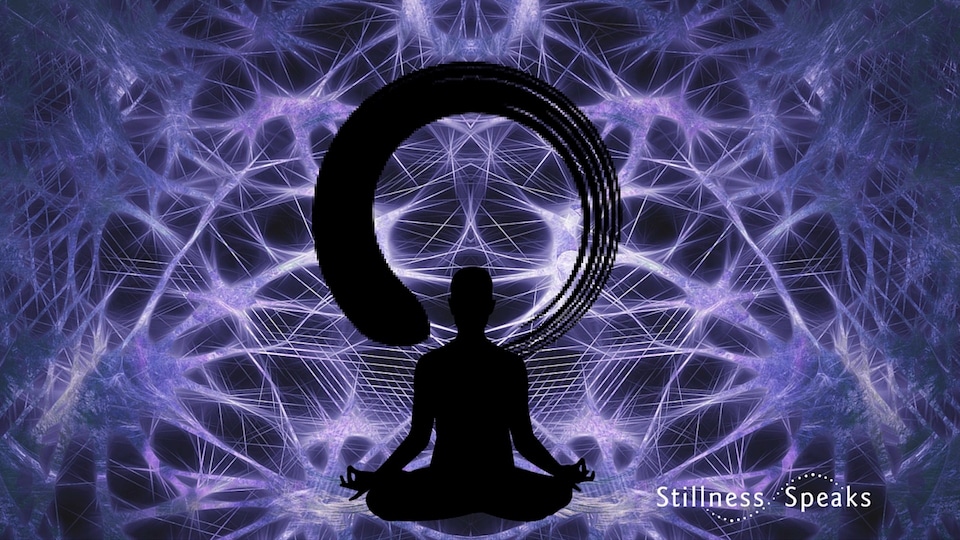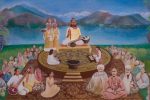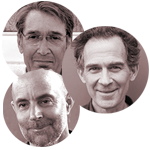“Awareness is the reality of everything… Having differentiated knowledge and not having undifferentiated knowledge is bondage.” ~ from Shiva Sutras
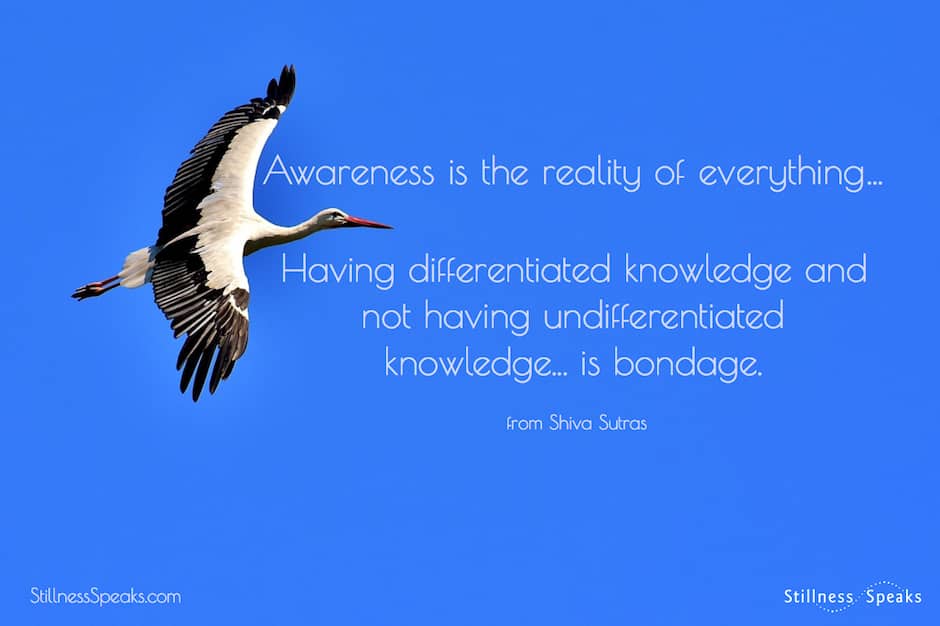
John Hughes’ article Moksha in Kashmir Shaivism introduces the extraordinary soteriology of Kashmir Shaivism. As in all Indian traditions, the concept of moksha is central. Moksha is commonly translated in English as spiritual “liberation” or “freedom.” Although most Indian traditions teach liberation as the “end all and be all of spiritual life,” each tradition has its own understanding of what moksha means and offers varying ways to “achieve” it. Hughes describes the unique understanding of “moksha” and the means of its attainment as revealed by Kashmir Shaivism.
This second post in our series overviews the means (upayas) used by aspirants seeking moksha in Kashmir Shaivism. All italicized text is taken from Hughes’ article Moksha (liberation) in Kashmir Shaivism which is available as a FREE PDF download generously given to us by the Lakshmanjoo Academy. If you missed it, click here to read Part 1 of our series.
Concealing and Revealing His Nature
Hughes poises a central question which sheds light on the means of attainment (moksha) in Kashmir Shaivism …Why has Lord Shiva created this external objective world, this manifestation of supreme energy, in His own nature?
“Trika Shaivism teaches that Shiva has manifested this external world in His own nature for only one reason—Just to recognize His own nature. This whole universe is the means to recognize Lord Shiva. You can recognize Lord Shiva through the universe. You cannot recognize Lord Shiva by abandoning the universe. This objective universe, therefore, is a means, a tool, to be used to realize the Universal reality of Shiva.”
Paradoxically Shiva is ignorant of His own nature because he exists in the “full splendor of His God consciousness. “…he wants His own nature to be recognized. This recognition gives Him great joy… It is Shiva’s play to seemingly leave His own nature so that He can find it and enjoy it again.”
To lose Himself in creation and to find Himself again, Shiva expands his God Consciousness in a process “known as nimesha (closing) and unmesha (opening). It is the supreme energy of God which gives rise to nimesha and unmesha. Nimesha is the withdrawal of His God consciousness, and unmesha is the expansion of His God consciousness. Both of these states are contained within Shiva simultaneously.”
What does Shiva find when He rediscovers His own nature?
“For the Kashmir Shaiva, this is the real essence of this teaching. Lord Shiva loses His nature only to find it again—and when He does He realizes that it was already there.”
“Shiva experiences that there was never really any separation from His God consciousness. Separation only seemed to exist. For Kashmir Shaivism this is the greatest mystery of existence and Lord Shiva’s supreme act.”
Bondage through Ignorance
In creating this world Shiva conceals His real nature. How does He do this? “(Shiva) hide(s) Himself in the particularity of the world. As a particular individual, Shiva loses the real undifferentiated knowledge of His real Self and possesses only differentiated knowledge of particularity.”
This process of veiling himself from Himself is maya or ignorance. “Ignorance, for Kashmir Shaivism, is not the absence of knowledge. Instead, ignorance is said to be the non-fullness of knowledge.”
“The Kashmir Shaiva tells us that knowledge is always present in our conscious lives but it is limited knowledge. Real knowledge, which is in essence unlimited, is Self–knowledge….The Kashmir Shaiva argues that every limited being must have some knowledge because no one could exist without knowledge. Knowledge, being identical with consciousness, is the essence of reality.”
Means (Upāya)
Kashmir Shaivism has identified three methods or means (upāya) used to enter Universal consciousness from individual limited consciousness…
“The first and supreme means, for aspirants with very refined awareness, is called shāmbavopāya, the means associated with Shiva.”
Tenth century Kashmiri mystic, Abhinavagupta, defines shāmbavopāya as that upāya in which the aspirant achieves entry into Supreme consciousness. He does this by preserving thoughtlessness and by the grace of his master. This entrance is achieved without adopting any practices such as thought (dhyāna), mantra, or meditation. Shāmbhavopāya is considered to be the most refined upāya.
“The second, for aspirants with medium power of awareness, is called shāktopāya, the means associated with Shakti.”
With Shāktopāya the aspirant achieves mystical entry through concentrating on the Supreme Being that is “found in between any two actions without action… this practice is called centering.” To achieve centering, “the aspirant must develop great firmness of awareness.”
“For the Kashmir Shaiva, what is important… is that between the end of one thought or perception, and the beginning of another there is a gap. It may be ever so momentary but there is a gap. And—this is most important—within this gap shines that Universal Reality of Shiva, which lies in the background and is the ground of all diversity.”
“The third means, for aspirants with inferior awareness, is called āṇavopāya.”
“Āṇavopāya is defined as that upāya where mystical entry takes place through concentration on parts of the body, contemplation, recitation, taking the support of the breath, and mantras.”
Āṇavopāya is considered an inferior means because it is associated with the individual. Transitioning from limited particular consciousness to Universal consciousness depends on the strength or awareness and ability of the aspirant.
In Kashmir Shaivism, there are many ways to attain the single goal: “mystical absorption in the shāmbhava state.”
What is the shāmbhava state? “The shāmbhava state is where the yogi becomes instantly established in Supreme consciousness. For the Kashmir Shaiva, all absorption in the reality of God consciousness is, in the end, the absorption of the shāmbhava state.”
What determines which upāya the aspirant is qualified for? Swami Lakshmanjoo explains….
“The secret is the strength of awareness of the perceiver… strength of awareness means to possess such power of subjective consciousness that the practitioner’s one-pointed subjective awareness is not overshadowed, either by objective experience or thoughts.”
Swami Lakshmanjoo is a “direct descendant in the unbroken chain of this oral tradition.”
In the ordinary, day to day mind, objects of perception overshadow the perceiver. One is aware only of what one’s thinking about, and is completely unaware of the perceiver who is perceiving. This is ignorance, which is overshadowed by the world of diverse objects and is completely unaware of Universal Nature.
“Thus, human beings live their lives completely absorbed in the objective or cognitive worlds. Although we might say, ‘I am seeing a butterfly,’ in actual fact the ‘I’ is eclipsed by the act of seeing and what remains is ‘seeing a butterfly.’ In other words, the subject is lost, completely absorbed, in the act of perception.”
“Developing strength of awareness means gaining the ability to think thoughts and experience perceptions without losing self–awareness.”
Hughes emphasizes that though there are a variety of means (upayas)… all lead to the state of one transcendental consciousness.
Click here to read Part 3 of this Kashmir Shaivism series, which focuses on moksha … and here is Part 1.
John Hughes is a the editor in chief at the Lakshmanjoo Academy. In 1997, he associated himself with a non-profit the Universal Shaiva Fellowship, an organization dedicated to the preservation and publication of Swami Lakshmanjoo’s revelations of these ancient Kashmir Shaiva texts. By 1979, he had published two books from these ancient manuscripts, Shiva Sutras: The Supreme Awakening and Kashmir Shaivism: The Secret Supreme.”
John is also the project leader for the editing and publication of an important new series entitled “Light on the Tantra of Kashmir Shaivism, the Tantrāloka of Abhinavagupta.” Please vist the Lakshmanjoo Academy for John’s full BIO.




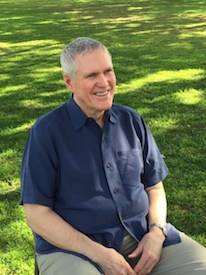 John Hughes
John Hughes